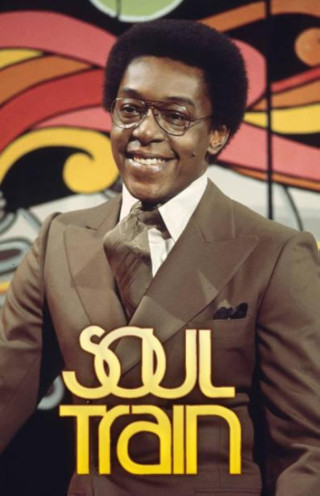There’s likely no single Black-owned brand that elicits a collective smile more than Soul Train, the nationally syndicated dance show that premiered 50 years ago this fall. Host and founder Don Cornelius’s adage of “Love, Peace, and Soul” resonated for generations, unleashing what Nelson George has called the civil rights movement’s secret power: “Black Joy.” Yet embedded within the funky rhythms, ethereal harmonies, and Day-Glo body suits was a desire for something more elusive: Black Power.
Black music was a potent force in the drive towards civil rights, from the activists that repurposed spirituals and labor songs into protest anthems to groups like Curtis Mayfield and the Impressions urging folk to “keep on pushing’,” Aretha Franklin demanding “Respect,” and James Brown saying it loud about being “Black and Proud.” The year of 1971 was a coming out of sorts for politically charged messages in Black music, with Aretha Franklin’s Live at Fillmore West, Sly & the Family Stone’s There’s a Riot Goin’ On, and Marvin Gaye’s What’s Going On all making their debuts. The national broadcast of Soul Train was born in and of this moment.
A local version of Soul Train had already launched in August of 1970 in Chicago on WCIU-TV, with sponsorship from the Sears and Roebuck Company. The broadcast featured legendary Chicago vocalist Jerry Butler, as well as Chicago-based groups the Five Stairsteps, riding the waves of their breakthrough hit “Ooh Child,” and the Chi-Lites, whose own mainstream breakthrough, “Have You Seen Her,” would be a year away. Fellow Chicagoans Syl Johnson (“Is It Because I’m Black”) and Gene Chandler of “Duke of Earl” fame were among the acts who would appear on the program’s second episode. This ability to draw on “local” talent and the value of the show as a platform for up-and-coming acts would be important to Soul Train’s success. Eventually, an appearance on Soul Train would provide a kind of street cred for Black artists—even those who had achieved national crossover success.
Soul Train hit nationally syndicated airwaves in late October of 1971. The first show featured the Honey Cone (“Want Ads”), Eddie Kendricks, newly solo after a decade as the co-lead of The Temptations, and Gladys Knight and the Pips. But it was the energy of the teenagers who populated the soundstage introducing the nation to the Get Down, the Hi-Low, and the Breakdown that made the show an immediate hit. In her book Love, Peace and Soul: Behind the Scenes of America’s Favorite Dance Show Soul Train, Ericka Blount Danois described it as “black radio on television.” More to the point, Soul Train was an electronically mediated version of the chitlin’ circuit—the informal networks of theaters, night-clubs, and after-hours joints that sustained Black performers who were denied access to integrated venues prior to the civil rights movement. One of the linchpins of the Black entrepreneurial class, the chitlin’ circuit was the closest thing to a national Black culture.
